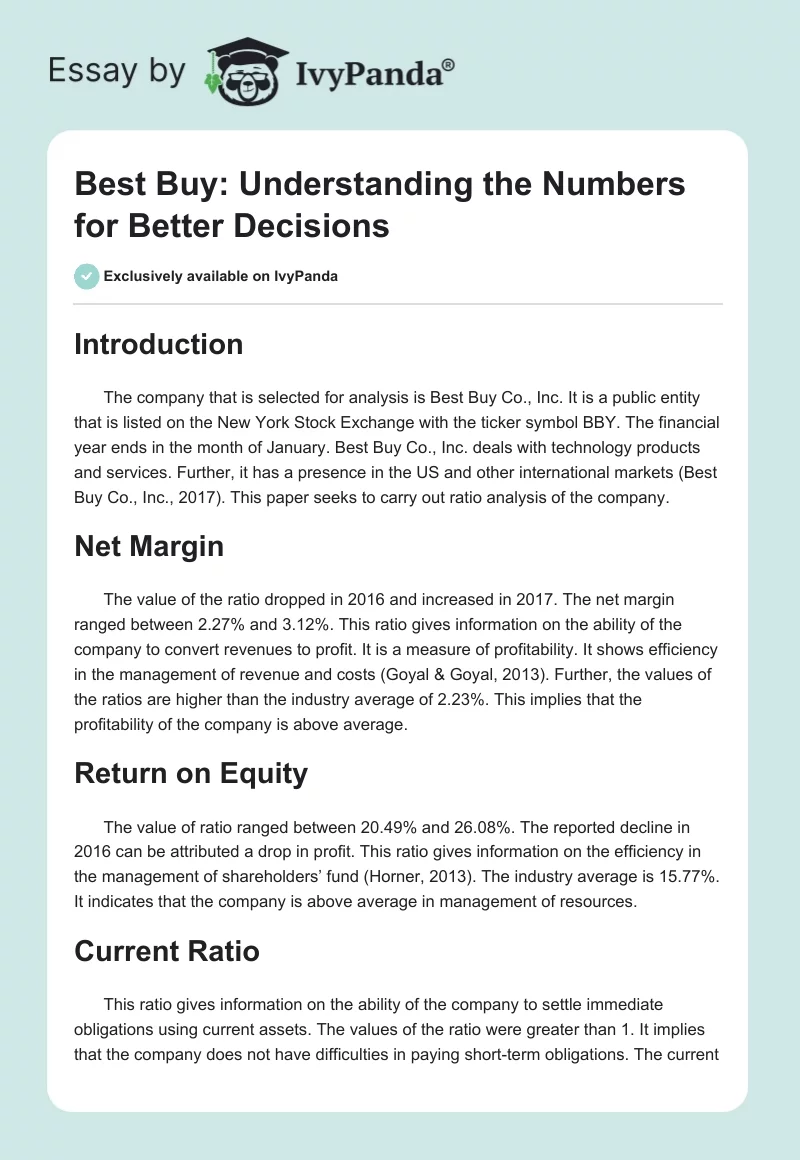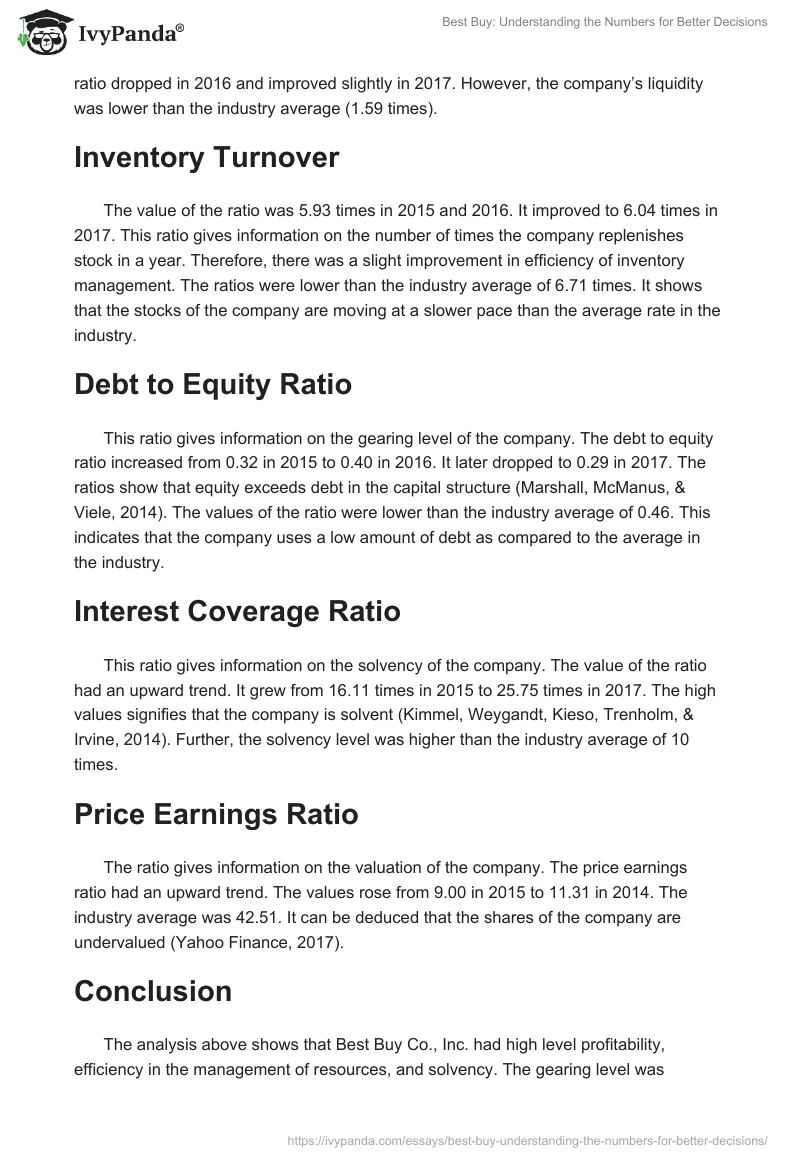Introduction
The company that is selected for analysis is Best Buy Co., Inc. It is a public entity that is listed on the New York Stock Exchange with the ticker symbol BBY. The financial year ends in the month of January. Best Buy Co., Inc. deals with technology products and services. Further, it has a presence in the US and other international markets (Best Buy Co., Inc., 2017). This paper seeks to carry out ratio analysis of the company.
Net Margin
The value of the ratio dropped in 2016 and increased in 2017. The net margin ranged between 2.27% and 3.12%. This ratio gives information on the ability of the company to convert revenues to profit. It is a measure of profitability. It shows efficiency in the management of revenue and costs (Goyal & Goyal, 2013). Further, the values of the ratios are higher than the industry average of 2.23%. This implies that the profitability of the company is above average.
Return on Equity
The value of ratio ranged between 20.49% and 26.08%. The reported decline in 2016 can be attributed a drop in profit. This ratio gives information on the efficiency in the management of shareholders’ fund (Horner, 2013). The industry average is 15.77%. It indicates that the company is above average in management of resources.
Current Ratio
This ratio gives information on the ability of the company to settle immediate obligations using current assets. The values of the ratio were greater than 1. It implies that the company does not have difficulties in paying short-term obligations. The current ratio dropped in 2016 and improved slightly in 2017. However, the company’s liquidity was lower than the industry average (1.59 times).
Inventory Turnover
The value of the ratio was 5.93 times in 2015 and 2016. It improved to 6.04 times in 2017. This ratio gives information on the number of times the company replenishes stock in a year. Therefore, there was a slight improvement in efficiency of inventory management. The ratios were lower than the industry average of 6.71 times. It shows that the stocks of the company are moving at a slower pace than the average rate in the industry.
Debt to Equity Ratio
This ratio gives information on the gearing level of the company. The debt to equity ratio increased from 0.32 in 2015 to 0.40 in 2016. It later dropped to 0.29 in 2017. The ratios show that equity exceeds debt in the capital structure (Marshall, McManus, & Viele, 2014). The values of the ratio were lower than the industry average of 0.46. This indicates that the company uses a low amount of debt as compared to the average in the industry.
Interest Coverage Ratio
This ratio gives information on the solvency of the company. The value of the ratio had an upward trend. It grew from 16.11 times in 2015 to 25.75 times in 2017. The high values signifies that the company is solvent (Kimmel, Weygandt, Kieso, Trenholm, & Irvine, 2014). Further, the solvency level was higher than the industry average of 10 times.
Price Earnings Ratio
The ratio gives information on the valuation of the company. The price earnings ratio had an upward trend. The values rose from 9.00 in 2015 to 11.31 in 2014. The industry average was 42.51. It can be deduced that the shares of the company are undervalued (Yahoo Finance, 2017).
Conclusion
The analysis above shows that Best Buy Co., Inc. had high level profitability, efficiency in the management of resources, and solvency. The gearing level was favorable. However, the liquidity and efficiency levels were low. Finally, the valuation ratio shows that the share is undervalued. Generally, the ratio analysis shows that the company has a sound financial health.
References
Best Buy Co., Inc. (2017). Annual reports and proxy statements. Web.
Goyal, V. K., & Goyal, R. (2013). Financial accounting (4th ed.). New Delhi, India: PHI Learning Private Limited.
Horner, D. (2013). Accounting for non-accountants (9th ed.). Philadelphia, PA: Kogan Page Limited.
Kimmel, P. D., Weygandt, J. J., Kieso, D. E., Trenholm, B., & Irvine, W. (2014). Financial accounting: Tools for business decision making (6th ed.). New York, NY: John Wilely & Sons, Inc.
Marshall, D. H., McManus, W. W., & Viele, D. F. (2014). Accounting: What the numbers mean (10th ed.). New York, NY: McGraw-Hill/Irwin.
Yahoo Finance. (2017). Best buy co. inc. (BBY). Web.


